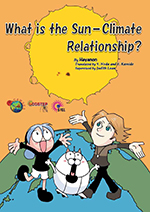Flubber (flying rubber) is an imaginary material that provided a plot point for two Disney science fiction comedies, The Absent-Minded Professor in 1961 which was remade in 1997 as Flubber. By contrast, ‘thubber’ (thermally conductive rubber) is a real life new material developed at Carnegie Mellon University (US).
A Feb. 13, 2017 news item on phys.org makes the announcement (Note: A link has been removed),
Carmel Majidi and Jonathan Malen of Carnegie Mellon University have developed a thermally conductive rubber material that represents a breakthrough for creating soft, stretchable machines and electronics. The findings were published in Proceedings of the National Academy of Sciences this week.
The new material, nicknamed “thubber,” is an electrically insulating composite that exhibits an unprecedented combination of metal-like thermal conductivity, elasticity similar to soft, biological tissue, and can stretch over six times its initial length.
A Feb.13, 2017 Carnegie Mellon University news release (also on EurekAlert), which originated the news item, provides more detail (Note A link has been removed),
“Our combination of high thermal conductivity and elasticity is especially critical for rapid heat dissipation in applications such as wearable computing and soft robotics, which require mechanical compliance and stretchable functionality,” said Majidi, an associate professor of mechanical engineering.
Applications could extend to industries like athletic wear and sports medicine—think of lighted clothing for runners and heated garments for injury therapy. Advanced manufacturing, energy, and transportation are other areas where stretchable electronic material could have an impact.
“Until now, high power devices have had to be affixed to rigid, inflexible mounts that were the only technology able to dissipate heat efficiently,” said Malen, an associate professor of mechanical engineering. “Now, we can create stretchable mounts for LED lights or computer processors that enable high performance without overheating in applications that demand flexibility, such as light-up fabrics and iPads that fold into your wallet.”
The key ingredient in “thubber” is a suspension of non-toxic, liquid metal microdroplets. The liquid state allows the metal to deform with the surrounding rubber at room temperature. When the rubber is pre-stretched, the droplets form elongated pathways that are efficient for heat travel. Despite the amount of metal, the material is also electrically insulating.
To demonstrate these findings, the team mounted an LED light onto a strip of the material to create a safety lamp worn around a jogger’s leg. The “thubber” dissipated the heat from the LED, which would have otherwise burned the jogger. The researchers also created a soft robotic fish that swims with a “thubber” tail, without using conventional motors or gears.
“As the field of flexible electronics grows, there will be a greater need for materials like ours,” said Majidi. “We can also see it used for artificial muscles that power bio-inspired robots.”
Majidi and Malen acknowledge the efforts of lead authors Michael Bartlett, Navid Kazem, and Matthew Powell-Palm in performing this multidisciplinary work. They also acknowledge funding from the Air Force, NASA, and the Army Research Office.
Here’s a link to and a citation for the paper,
High thermal conductivity in soft elastomers with elongated liquid metal inclusions by Michael D. Bartlett, Navid Kazem, Matthew J. Powell-Palm, Xiaonan Huang, Wenhuan Sun, Jonathan A. Malen, and Carmel Majidi. Proceedings of the National Academy of Sciences of the United States of America (PNAS, Proceedings of the National Academy of Sciences) doi: 10.1073/pnas.1616377114
This paper is open access.

